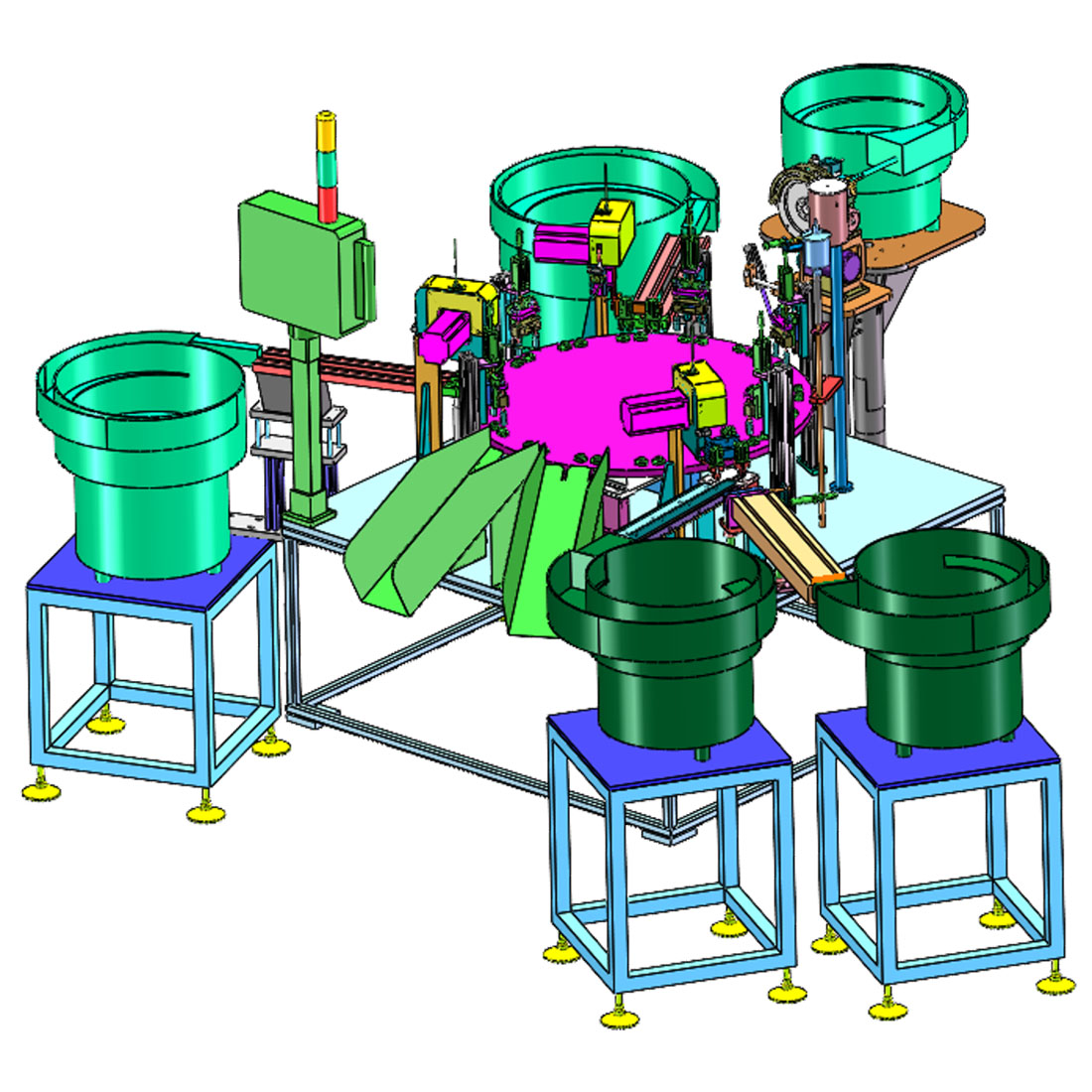Email format error
Email cannot be empty
Email already exists
6-20 characters(letters plus numbers only)
The password is inconsistent
Email format error
Email cannot be empty
Email does not exist
6-20 characters(letters plus numbers only)
The password is inconsistent


The Evolution of the Pump Assembly Machine: A Modern Marvel in Manufacturing
In today’s industrial landscape, precision and efficiency are paramount. Whether it’s the automotive sector, agriculture, or energy production, the need for reliable machinery has never been more critical. One such machine that plays an essential role in these industries is the pump assembly machine. But what exactly is it? How has it evolved over the years? And why is it so important? In this blog, we will explore the fascinating journey of the pump assembly machine, its key components, and its impact on the manufacturing world.
What is a Pump Assembly Machine?
To begin with, a pump assembly machine is a specialized piece of equipment used to assemble various types of pumps used in different industries. These pumps are essential for transferring fluids, whether it's water, oil, or chemicals, from one place to another. The assembly machine automates much of the process, ensuring that the pumps are constructed accurately and efficiently.
In the past, assembling pumps was a manual and labor-intensive task. However, with advancements in technology and automation, machines have been developed to streamline this process, reducing human error and increasing production speed. Today, pump assembly machines are used extensively in manufacturing facilities around the world, playing a crucial role in creating pumps that power everything from household appliances to heavy industrial machinery.
The Evolution of Pump Assembly Machines
The history of pump assembly machines mirrors the overall evolution of industrial machinery. In the early days of manufacturing, pumps were assembled by hand, and skilled workers used basic tools to put together the components. The process was time-consuming and prone to errors, which often resulted in costly repairs and downtime.
In the mid-20th century, the introduction of automation changed everything. Companies started developing machines that could automate the assembly process, significantly improving the speed and accuracy of production. These early pump assembly machines were relatively simple, but they laid the foundation for the highly sophisticated systems we see today.
Over the decades, pump assembly machines have become more advanced, incorporating technologies such as robotics, artificial intelligence (AI), and Internet of Things (IoT) connectivity. Modern machines are capable of assembling pumps with incredible precision, while also being able to monitor their performance in real-time and make adjustments as needed.
Key Components of a Pump Assembly Machine
A typical pump assembly machine is a highly complex piece of equipment with several key components. Understanding these components can help appreciate the precision and efficiency involved in the assembly process.
Conveyor System: The conveyor system moves the individual pump parts to the assembly station. This system is crucial for maintaining a smooth and continuous flow of materials, reducing the chance of delays or bottlenecks during the assembly process.
Robotic Arms: Many pump assembly machines feature robotic arms that can handle delicate parts with great precision. These robots are designed to pick, place, and sometimes even screw parts together, ensuring accuracy and consistency in every step of the assembly.
Automated Fastening Tools: Screws, bolts, and other fasteners are commonly used to assemble pump components. Automated fastening tools on pump assembly machines can tighten these fasteners to the exact torque specifications, ensuring that the pump is secure and operational.
Sensors and Monitoring Systems: Modern machines are equipped with sensors that track various parameters such as temperature, pressure, and alignment. These sensors can detect any issues early in the process, preventing defects and minimizing the need for rework.
Quality Control Stations: After the pump is assembled, it usually undergoes a quality control check. Automated systems test the pump for leaks, functionality, and performance. If the pump doesn't meet the required standards, it’s sent for adjustments or repairs.
Packaging and Distribution: Once the pumps are assembled and tested, they are often packaged and ready for distribution. Some pump assembly machines have integrated packaging systems that automatically place the finished pumps in protective packaging before they are sent off for shipment.

How Does a Pump Assembly Machine Improve Efficiency?
The primary benefit of a pump assembly machine lies in its ability to improve efficiency. Here’s how:
Speed: A pump assembly machine can work much faster than a human assembly line. Automated systems can operate 24/7 without the need for breaks, leading to higher output in less time. This is especially important in industries that require large volumes of pumps to be produced quickly, such as the automotive and construction sectors.
Precision: The accuracy of automated machines is far superior to manual labor. The risk of human error, which can lead to costly mistakes, is minimized. For example, a robotic arm can place a part in the exact position with millimeter-level precision, reducing the risk of misalignment.
Cost-Effectiveness: By reducing labor costs and minimizing waste, pump assembly machines help companies save money in the long run. Automated systems are more reliable than human workers and can significantly reduce the cost of errors and rework.
Consistency: Every pump produced on an assembly machine will be identical, ensuring that each one meets the same high-quality standards. This consistency is critical in industries where the performance of the pump is crucial, such as in oil and gas or chemical processing.
Flexibility: While pump assembly machines are designed for high-volume production, many modern machines can be easily reconfigured to accommodate different pump models. This flexibility allows manufacturers to quickly switch between different types of pumps without significant downtime.
Industries That Benefit from Pump Assembly Machines
The impact of pump assembly machines extends across various industries. Let’s take a look at some sectors that benefit most from these machines:
Automotive Industry: In the automotive industry, pumps are used for everything from fuel systems to cooling systems. Pump assembly machines help manufacturers produce the large number of pumps required for vehicles, ensuring they meet strict quality standards and are ready for assembly lines.
Oil and Gas: Pumps are essential in the extraction, transportation, and refining of oil and gas. Assembly machines ensure the pumps used in these processes are reliable and durable enough to withstand extreme conditions.
Water Treatment: Pump assembly machines are also crucial in the water treatment industry. Water pumps are used to move water through filtration systems, and the efficiency and reliability of these pumps are vital for public health and safety.
Pharmaceutical and Chemical Industries: In pharmaceutical and chemical manufacturing, pumps are often used to transfer delicate and potentially hazardous chemicals. Pump assembly machines help ensure that the pumps are not only functional but safe for handling such materials.
Agriculture: Pumps used in irrigation systems, fertilizers, and pesticides are essential for modern farming. Pump assembly machines help keep up with the increasing demand for efficient agricultural pumps.
The Future of Pump Assembly Machines
As industries continue to evolve and grow, so too will the demand for more advanced and efficient pump assembly machines. In the future, we can expect even greater levels of automation, powered by artificial intelligence and machine learning, to further enhance the capabilities of these machines.
One area where we are likely to see significant developments is in the area of predictive maintenance. With the integration of IoT sensors and AI, pump assembly machines will be able to predict when a component is likely to fail, allowing for maintenance to be performed before a breakdown occurs. This will reduce downtime and extend the lifespan of the machines.
Another trend is the move towards sustainable manufacturing. As environmental concerns become more pressing, pump assembly machines may be designed to use fewer resources, generate less waste, and operate more efficiently. Manufacturers are increasingly looking for ways to reduce their carbon footprint, and innovations in assembly machines will play a significant role in this transition.
Conclusion
In conclusion, the pump assembly machine is an unsung hero in the modern manufacturing world. Its ability to streamline production, enhance precision, and improve efficiency has made it an indispensable tool across various industries. As technology continues to evolve, the role of these machines will only grow, helping manufacturers meet the challenges of an increasingly fast-paced and demanding global market. Whether it’s powering our cars, keeping our homes supplied with water, or ensuring the smooth operation of industrial processes, pump assembly machines are playing a crucial role in keeping the world running smoothly.

